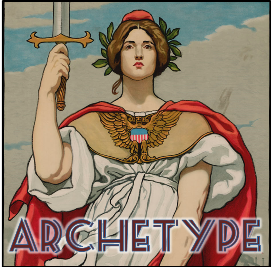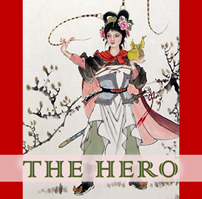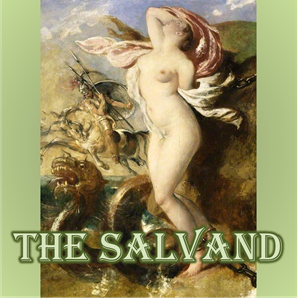 As the full story of Nobel laureate Tim Hunt’s allegedly sexist remarks begins to see the light of day, it becomes more and more clear that his “chauvinist monster” bit was actually a self-deprecating satire aimed not at women but at men. After the joke, he went on:
As the full story of Nobel laureate Tim Hunt’s allegedly sexist remarks begins to see the light of day, it becomes more and more clear that his “chauvinist monster” bit was actually a self-deprecating satire aimed not at women but at men. After the joke, he went on:
Now seriously, I’m impressed by the economic development of Korea. And women scientists played, without doubt an important role in it. Science needs women and you should do science despite all the obstacles, and despite monsters like me.
Far from trying to belittle women and drive them from science, he was deploying a negative caricature of male misbehavior in order to encourage women to stay in science. So, at first blush, this looks like a terrible mistake on the part of the feminist feeding frenzy that incinerated Hunt’s career before he could even return to England, because they destroyed an ally.
But, if you understand that archetypes—like the Damsel-in-Distress trope that drove the viral fury against Hunt—are about social relationships, not individual natures, the rabid desire to destroy a threatening male without concern for the underlying facts makes much more sense.
HOLLOW HERO
 When we discussed the Hero archetype, I emphasized that the defining characteristic of the Hero is that he or she is the hub at the center of a wheel of characters, meaning that the Hero is in a sense defined by relationships.
When we discussed the Hero archetype, I emphasized that the defining characteristic of the Hero is that he or she is the hub at the center of a wheel of characters, meaning that the Hero is in a sense defined by relationships.
This helps us understand why the Hero, particularly in traditional stories, is often the least interesting character in the story. The point of the Hero is to show how to interact with a Rough, and how to interact with a Companion, and how to interact with a Guru. The Hero is a social identity, not an individual identity, something easily missed in today’s ethos of “authentic” and self-expressive individualism.
The point of a hollowed-out, one-dimensional Hero character surrounded by more individually defined archetypes is that the listeners (or readers, or viewers) are supposed to put themselves into that hollow shell and learn something about how to interact with the Companions, Roughs, Villains, Gurus, etc. in their own lives.
By giving us a hollow suit of armor to wear, the Hero archetype urges us to do this rather than that, a fact which becomes very important later when we bring this back around to the Tim Hunt scandal.
HOLLOW SALVAND
 One of the complaints about the Damsel archetype is that, like the hollowed-out Hero of myth and folklore, she’s not much of a character. In fact, she often seems to fulfill no other function than to be threatened by a Villain and saved by a Hero. To be fair, neither the Villain nor the Hero in this basic, triangular scenario (like the mythic Andromeda-Cetus-Perseus trio in the icon at right) require much more fleshing out than the Damsel.
One of the complaints about the Damsel archetype is that, like the hollowed-out Hero of myth and folklore, she’s not much of a character. In fact, she often seems to fulfill no other function than to be threatened by a Villain and saved by a Hero. To be fair, neither the Villain nor the Hero in this basic, triangular scenario (like the mythic Andromeda-Cetus-Perseus trio in the icon at right) require much more fleshing out than the Damsel.
The point of the archetypes isn’t the individual characters and their personalities, it’s the active relationship between them: this one gets threatened by that one and is saved by the other one. It’s intriguing to note that the word “hero” is etymologically tied to the word “servant.” through the Proto-Indo-European root *ser-, meaning “to protect.” In the Damsel triangle the Hero exists only to save, and thus serve, the Damsel.
But, the primary relationship in this triangle, the one that makes it work and allows it to exist at all, is the relationship between the Damsel and the Villain. Without a Villain, in fact, there’s no need for a Hero because the Damsel isn’t a Damsel-in-Distress. At its core, the Damsel-Villain-Hero triangle is a threat narrative about how to interact with the Villain.
Which is, of course, to attack him.
THE DAMSEL BIAS
I’ve decided to refer to the Damsel literary type as the “Salvand” (meaning the object of an act of saving) since “damsel” is an irretrievably gendered word and we do see male Salvands in fiction, like the Emotionally Stifled Dude who needs saving by the Manic Pixie Dream Girl. So, when discussing literature as archetypal narrative, I will henceforth use the gender-neutral Salvand to refer to the Damsel type.
However, the Damsel Bias in human social psychology should retain its gendered title because there is an innate human prejudice to interpret males as threatening and females as in need of saving or comforting. This bias has been demonstrated scientifically by comparing interpretations of adult male and female faces professionally posed in identical expressions (Plant, et al. 2006), by comparing interpretations of the same crying baby alternately labeled as a boy or a girl (Cummings, et al. 1986), and by comparing interpretations of a baby, again alternately labeled male or female, reacting to a jack-in-the-box (Dodge, 1998). In these studies, subjects interpreted identical emotional expressions as angry when from males, but fearful or sad when from females.
It’s this cognitive social bias to see men as threats and women as threatened that leads us to criticize the female Salvand (the Damsel-in-Distress) as sexist and demeaning, but not the male Hero despite that he exists in the story only to serve/save the female. Conversely, when the male is the Salvand we see the female Hero character (the Manic Pixie Dream Girl) as sexist and demeaning to women precisely because she exists only to serve/save the male.
The Damsel Bias is the foregone conclusion (i.e., the prejudice) that women are threatened and men are threatening, even when their roles and behavior are morally or narratively identical. This prejudice manifests in a variety of ways, including the huge sentencing disparity for men and women who commit the same crimes and the disturbingly different ways people react to domestic violence depending on whether the man or woman is the abuser. The bias enables us as a society to ignore higher rates of female-on-male domestic aggression and the weird fact that the same act of sexual violence is called “rape” only when the male is the aggressor.
The essence of this bias is the -in-Distress part of the Damsel archetype—the woman as threatened victim—and thus the focus of the archetypal triangle is on the Villain. To satisfy the threat narrative of the bias, there must be a Villain, and we (stepping into the Hero’s armor) must attack him.
TIM HUNT AS A FEMINIST MOBY-DICK
The Villainous monster of myth who threatened Damsel-in-Distress Andromeda was Cetus, from the Greek word κῆτος, which originally had a generic meaning of “sea-monster” but which we now use to refer to whales. And, like the revenge-driven Ahab whose obsessive grievance against the White Whale doomed the Pequod, Melville’s metaphor for democracy, people caught up in the Damsel Bias often transform into the threatening monster even while they claim to fight the monster.
The full story of Tim Hunt’s pro-woman speech, cherry-picked to dishonest reversal by grievance activist Connie St. Louis (who has since been revealed as generally dishonest), demonstrates how destructive the Damsel Bias can be even for the Damsel herself. Now it’s clear that the mindless impulse to destroy the presumed male Villain resulted in a male Hero, who was boosting women scientists, getting his reputation and career shredded by women scientists.
And, those of us who struggle to see through the bias can end up like Ishmael, clinging to the coffin of Queequeg—Melville’s paragon of genuine diversity—among the wreckage of diversity wrought by an obsessive grievance narrative. It is particularly ironic that Melville himself has been the target of the same sort of obtuse, politically motivated, and cherry-picked assault that Hunt suffered.
Because the Salvand archetype expresses itself in such a aggressively gendered way, due to our species’ innate Damsel Bias, it deserves special care and skepticism.
(Related: “How the damsel stereotype tricks us into rescuing it from our own attempts to destroy it“)

Michael Pyshnov
July 3, 2015 at 2:36 pm
Should a university resemble a 100% politically correct Hollywood show with the producers regarding scientists as their actors, adjusting the numbers of sexes and minorities and dictating when they should cry and laugh and what they should say?
The removal of Sir Tim Hunt is the second case of political persecution of a Nobel laureate, the first was that of James Watson. In both cases, their alleged “crime” was purely political, and it was framed in political slogans, “racism” and “sexism”.
The public debate around the decision of UCL to remove Tim Hunt is missing the point. (Were his words a joke or not? Was there enough “sexism” in his words? Did twitter remove Tim Hunt?) Let’s now get serious and ask: Was the removal of Tim Hunt legal? I believe it was completely illegal. And the law does exist here, it is first – the law against discrimination and second – the law protecting freedom of speech.
Discrimination is an act of using irrelevant considerations (such as sex, colour of skin, etc.) in a decision/judgement made by an official against an individual. Discrimination is taken as an act denying an individual his or her human right(s). Such act is illegal, and the discrimination must be proved. There is no claim and no evidence that Sir Tim Hunt has committed such act. His speech did not represent any decision, and, being a joke or not being a joke, did not, and was not even capable of damaging/changing the standing of any women before the law or denying their human rights.
Then, what is the accusation against him? The official explanation is the letter of Professor Michael Arthur, UCL President & Provost, “Provost’s View: Women in Science”, see https://www.ucl.ac.uk/news/staff/staff-news/0615/26062015-provosts-view-women-in-science
This is a remarkable document. In it, Michael Arthur 1) did not refer to any law whatsoever, 2) refused, in his own words, to “…repeat or re-analyse who said what…”, i. e. refused to present the evidence, 3) justified the removal of Sir Tim Hunt solely on his (determined by the administration) “sexism”. The text seems to be written by a political agitator in the smashing style of Leon Trotsky, totally disrespectful of the law and civilized academic tradition. He calls the removal of Tim Hunt an “episode”.
In sharp contrast with discrimination which, in a particular decision, is depriving individuals of their human rights, “sexism” in a speech is incapable of doing this. The accusation of “sexism” here is no more than a political opinion, a label which cannot be used to punish anyone. Therefore, the removal of Tim Hunt was an illegal act, patently – a political persecution. Moreover, it was an act of discrimination and a denial of the basic human right – freedom of speech.
Looking closer at this “episode”, I believe it was designed not even so much against Tim Hunt, but with the purpose of establishing a precedent for persecution of any political dissent. Tim Hunt was chosen as one who loved his university and would not start a legal fight. He was chosen as a top scientist to show that no one is immune to political persecution, and that interests of science are the last item on the administration agenda.
As a Provost, Michael Arthur failed to uphold the law and academic freedom. As a President, he failed to act impartially and, actually, fuelled the “gender war”. In his letter, he claims to have acted on behalf of women, but the women appeared on the side of their former teacher, actually proving that Michael Arthur’s claim of acting on their behalf is a false claim. UCL urgently needs the new Provost and the new President.
Finally, it is important to understand that an employee does not sell his whole self to his employer. A woman cannot be obliged to sleep with her boss. Why, may I ask, a university includes political and social agenda in its rules for the employees? The scope of this agenda must be severely restricted to respect basic human rights of all its employees. A public university cannot be run as a political party or a Hollywood show.
I had posted a few comments on the matter at http://occamstypewriter.org/athenedonald/2015/06/15/what-next-after-tim-hunt-just1action4wis/
My web page: http://www.universitytorontofraud.com
My email is probably hacked.
Carrie X
July 6, 2015 at 10:26 am
Sorry but Hunt got exactly what he deserved. He wants to make an awful joke about men like himself being monsters to please some feminist narrative and then he gets treated like a monster. Karma’s a bitch. He played white knight for a movement that has nothing but hate for him and people born like him and he reaped the rewards of that. Hopefully other men will get the hint and take off their white armor.